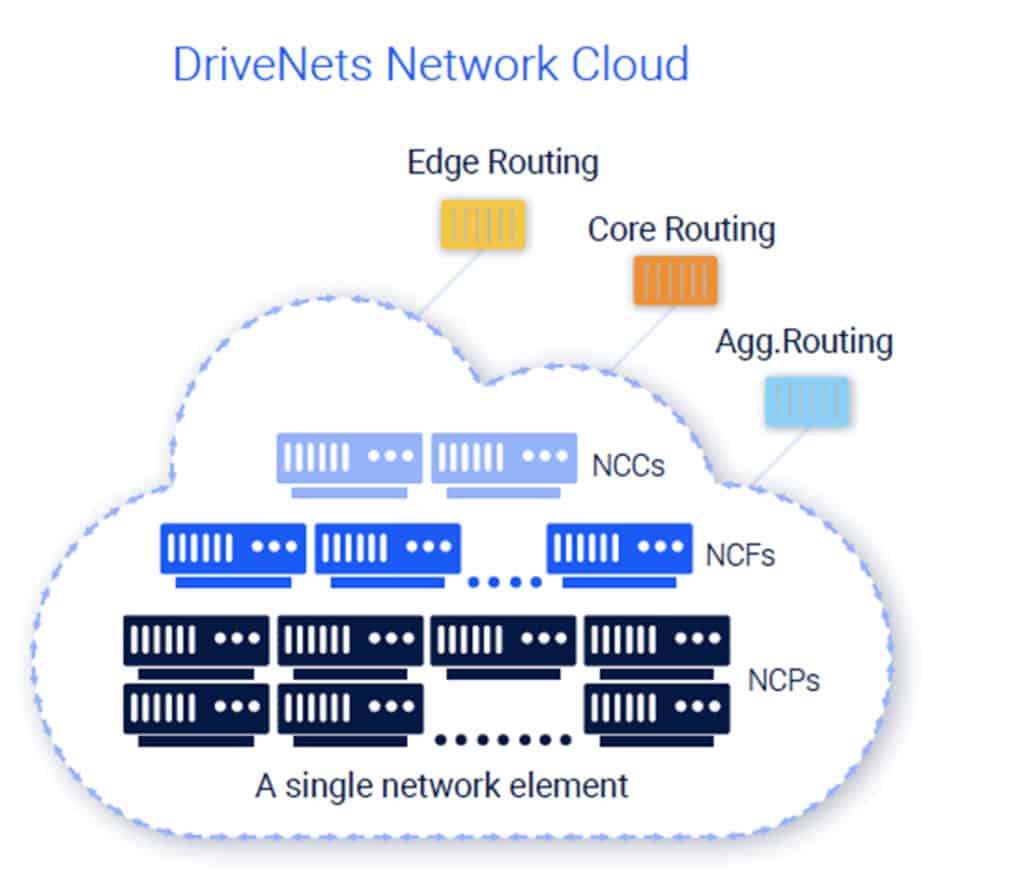In the past, similar challenges in data centers were addressed by hyperscalers, who advanced the cloud model with a pool of shared resources over virtual machines on a disaggregated architecture, across low-cost COTS servers. They disaggregated the software from the hardware, and introduced a virtualization layer that allows multiple applications to share the hardware resources and consume them only when needed.
But what does “network cloud” mean exactly? How can we build networks like a cloud?
Asking around will yield multiple answers and definitions, and it’s time to define this term in an accurate manner.
The Definition of Network Cloud
network cloud (noun)
A disaggregated, distributed, cloud-native, multi-vendor, networking-optimized, orchestrated unified infrastructure for any networking function.
The network cloud is, first and foremost, a unified infrastructure for any networking function. Namely, it’s a unified infrastructure layer across the entire network that can optimally accommodate any networking function.
Today’s networks are based on proprietary hardware-centric router infrastructure, with dedicated resources that cannot be shared as a pool of network resources, resulting in an inefficient and costly physical infrastructure.
Who Uses Network Cloud?
A “network cloud,” on the other hand, brings specific features and values to benefit the whole system as a whole. A successful “network cloud” is:
- Disaggregated: Hardware and software disaggregation is a prerequisite for the network cloud. The network cloud provides an abstraction layer that allows network function software to run on top of commercial-off-the-shelf (COTS) hardware.
- Distributed: This means grouping a cluster of COTS hardware into a single pool of resources. This is done by the abstraction layer (the hypervisor), allowing the use of smaller and fewer hardware building blocks, easy scaling and multi-level disaggregation. On top of the hardware-software disaggregation, multi-level disaggregation means control-plane and user-plane disaggregation, and even forwarding-function and fabric-function disaggregation.
- Cloud-native: The software environment is such that it allows running containerized network functions distributed over the entire infrastructure.
- Multi-vendor: The infrastructure supports instances from multiple vendors, and not only from the provider of the network cloud infrastructure.
- Networking-optimized: The underlying hardware infrastructure should be networking-optimized, i.e., based on white boxes with networking-specific ASICs (NPUs). Moreover, the abstraction layer should allocate both compute and networking resources to the upper layer instances. This allows the system to offload networking-intensive tasks to the NPU, accelerating those applications and reducing the overall hardware required for a given network scenario.
- Orchestrated: The entire solution is orchestrated, managed and automated, allowing the operator to plan, provision, manage, troubleshoot and optimize the network more efficiently than it can with its current, monolithic network infrastructure.
The DriveNets Network Cloud
When you look at the above mentioned merits of the network cloud, it is easy to see its “reflection” in the features and benefits of the DriveNets Network Cloud.
The following diagram illustrates the DriveNets Network Cloud architecture. Indeed, it is a disaggregated, distributed, cloud-native, multi-vendor, networking-optimized, orchestrated unified infrastructure for any networking function – from core and peering to aggregation and edge.

DriveNets Network Cloud solution supports a variety of network-function sizes with the same white box building blocks and can scale from a single-box-based router to the largest router size available in the market, with the same software. This architecture offers the most efficient way to build networks, while significantly reducing the amount of hardware resources required in the network, leading to lower costs, optimal scaling and ease of innovation.
How does Network Cloud work?
DriveNets Network Cloud architecture is flexible and modular, enabling a variety of deployment models. It can run within a single white box (standalone mode) or in a cluster mode over multiple white boxes interconnected using Clos topology and operating as a single router. DriveNets Network Cloud takes the big router and breaks it down into white box building blocks, running cloud-based software on top of it. It disaggregates the control and data planes, allowing each to scale independently. The control-plane runs on x86 servers and the data plane is implemented with a cluster of white boxes. The data plane is built from just two building blocks: Network Cloud Packet Forwarder (NCP) and Network Cloud Fabric (NCF), and it scales from a single standalone solution of 4-12.8Tbps to a large cluster of 691.2Tbps made of dozens of white boxes operating as a single routing entity. DriveNets Network Cloud cloud-native software also allows for additional services that run in separate software containers. Each networking function, which runs a Service Instance (SI) microservice in a cloud container, can be allocated with any hardware resources (physical interfaces, NPU, CPU, TCAM, QoS etc.) of the underlying hardware-shared infrastructure.
Network Cloud features
DriveNets Network Cloud applies the cloud approach to the service provider routing.
- Cloud-native software – Built with containerized microservices, creating a unified shared infrastructure, and enabling any service, on any port, at any scale
- Flexibility – From a 4Tbps single-box router to a cluster of white boxes that operate as a single carrier-grade router of up to 691.2Tbps
- Same building blocks, any use case – Rich service offering including core, aggregation/peering, edge, access, data center interconnect (DCI), 5G, and more, using the same hardware building blocks and running on open standard white boxes (built on networking merchant silicon and COTS x86 servers)
- Carrier grade ecosystem – Full ecosystem including software, hardware, cabling, and professional services, meeting the demands of Tier-1 carrier-grade service providers • Software-based license model – Independent from hardware constraints
- Open, standard and field-proven – Deployed in AT&T’s core network, supporting the distributed disaggregated chassis (DDC) submitted to the Open Compute Project (OCP)
Network Cloud benefits
DriveNets Network Cloud simplifies the overall network’s operations, and offers carrier-grade, telco-scale performance at a much lower cost. It streamlines the network’s operational model and enables substantial growth, rapid service innovation and greater service profitability.
Last, to ensure open architecture, DriveNets Network Cloud is ready to run on any network, cloud-certified hardware platform, and is the first to support AT&T’s Distributed Disaggregated Chassis (DDC) architecture, as submitted to the Open Compute Project (OCP).
Network Cloud makes software-based networks possible
The network is a key asset and differentiator for both service and cloud providers. Facing business and technical challenges, the traditional network model based on proprietary, chassis-based devices has become irrelevant. Service and cloud providers are now looking for alternative software-based solutions that are open, highly scalable, simple to operate, and low-cost.
At the end of the day, DriveNets Network Cloud is the one platform that makes software-based networks possible and real. DriveNets Network Cloud solution offers a single disaggregated networking solution for building core, edge, peering, and access network, as well as an open, scalable, simple, and cost-effective approach. The time for transforming to software-based networks has arrived. DriveNets Network Cloud makes it possible and real, today
White Paper
Introducing DriveNets Network Cloud




